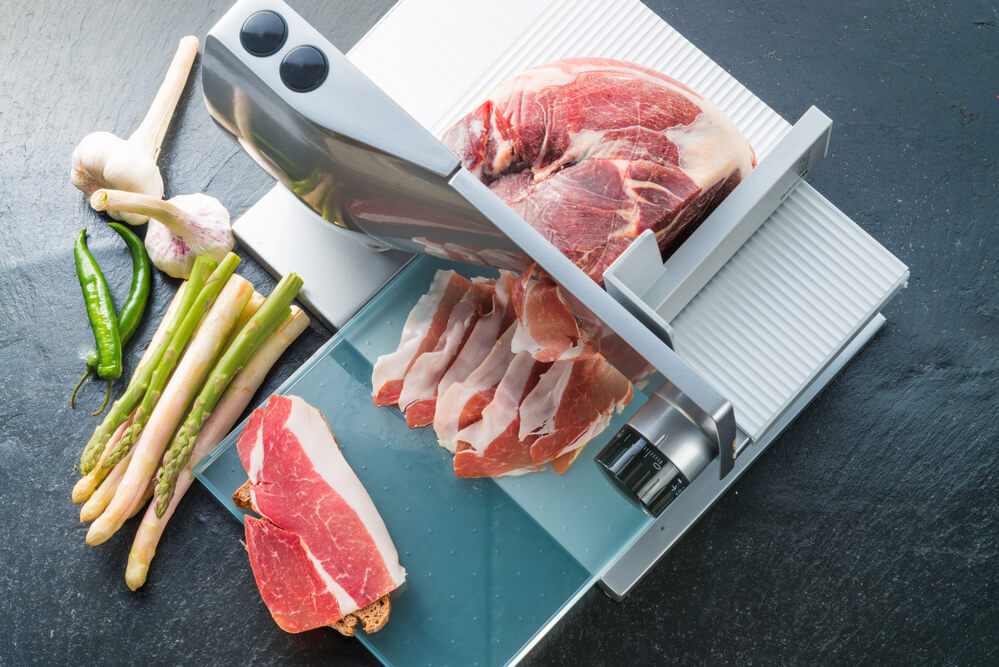
Meat Slicers vs. Meat Grinders
You may think that meat slicers and meat grinders are useful only in a professional setting, but they have all sorts of benefits for residential applications as well. National Band Saw Co, which sells low cost Hobart equipment parts for meat slicers and meat grinders, has detailed some of the most important things to know before purchasing either piece of equipment.
What Is a Meat Slicer?
Also called a slicing machine or just a slicer, this is a tool often found in grocery stores and butcher shops to cut up all sort of deli products like meats and cheeses. Some older models use a crank, while newer models rely on an electric motor; some domestic varieties do exist.
Meat slicers work not only for meats, but are also great for cheeses, bread, and some vegetables. Make sure that if you’re going to cut bread and cheese to use a serrated blade to cut through it with ease.
Whether you are using a super-big industrial model or a tiny residential version, there are a few safety procedures you should follow. There is, of course, the danger of operation, but you should also make proper sanitation procedures a priority. Make sure that the clamp arm is nice and secure around the meat when you put it on the slicer. The adjuster knob will give you the desired thickness you need. Use your right hand to operate the carriage back and forth, and use the left to hold the meat on the tray or piece of paper.
A common question is what type of slicer to invest in. It all depends on what you need it to do. Smaller slicers work great if you’re going to use it for an hour or less per day. You just need to gauge how much slicing and what type of meat you’re going to cut. With tougher meat and more of it, you’re going to need a bigger machine.
What Is a Meat Grinder?
Invented in the 19th century by Karl Friedrich. , meat grinders are kitchen appliances that mince raw or cooked meat and vegetables. Like meat slicers, older versions of this device were powered by hand, while electric models have come to corner the market.
There are a few things to keep in mind before you use your meat grinder. First, make sure to keep whatever it is you are grinding cold, as this works better. Also, make sure to keep your blades sharp and invest in attachments to make the process easier.
When shopping for a meat grinder, you typically want one around 400 watts, as this will work for most people. If you are going to use it sparingly, something as small as 150 watts will work, while 1000 watt models are available for those that really need to smash up a lot of meat and vegetables.
Ideally, you’re going to want to a machine with a pair of stainless steel blades, as these are the toughest. Make sure to keep an eye out for features like a variety of funnels while also having a reverse switch to kick back any meat you decide not to mince.
Since many grinders already come with funnels to make sausages, you should consider investing into a sausage stuffer. If you want to save some counter space, you can turn your food processor or stand mixer into a grinder with an associated attachment.
Should I Get a Slicer or a Grinder?
Even if you don’t fancy yourself a serious chef, these devices can be really useful. Getting precise and even cuts with a slicer should never be downplayed, while grinders themselves are incredibly useful for making sausages and other types of meat.
There are many residential versions of slicers and grinders available. As you can imagine, not all of them are equal in quality. There is a variety of features and power levels to consider when shopping for these machines.
What About Sanitation?
Make sure to use a non-harsh cleaner on the machine after you cut meat. It’s also important to wash your hands before each use with soap and warm water. It’s highly recommended that you wear plastic gloves while slicing and have a paper towel on the tray to absorb the meat juices.
Both slicers and grinders are great for all sorts of meats, but they can also be used for a wide variety of other foods. Make sure to get the model that is right for you, along with always following proper safety procedures when operating one of these machines.

